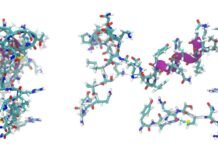What is a Shoulder Impingement?
Shoulder Impingement is when the soft tendons of these muscles get inflamed as they pass through an often narrow passageway known as the acromion cavity. This is a common problem for people who have had accidents and are then put through physiotherapy treatments. Common symptoms include pain, inability to move or lift the arm, locking of the shoulders and even fractures. Physiotherapy, however, is a good method of dealing with shoulder impingement at the start of any therapy.
- The physiotherapist will first have a discussion with the patient about the details of their case. The shoulder impingement is caused by either direct contact between two bones or by a weakness in the surrounding muscle tissue.
- Once this has been determined, the physiotherapist will then assess the patient’s pain and ability to move in different positions.
This assessment is normally done using one of two different methods. It can be done on a scale where the patient feels mild to moderate pain or it can be done with the use of a standard medical pain questionnaire.
Activities Involved in Physiotherapy

Generally, physiotherapy treatments provided at Healthbound Clinic in Toronto for shoulder impingement deal with activities involving the arm, specifically activities involving bending and lifting. Usually, the physio will prescribe activities such as resisting lifting the upper body whilst raising the arms above the head, using the lateral part of the arm in flexion, resisting lifting the arms above the head in extension, resisting lifting the arms above the chest, and flexion and increasing strength in specific flexion and movement patterns. Treatment will usually involve stretching the muscles involved in these activities. This may involve exercises on the front of the upper arm and possibly stretching the subacromial ligament.
If Body Doesn’t Respond to Medications
- Physiotherapy for shoulder impingement can be helpful if the symptoms do not respond to anti-inflammatory medications or to exercise. If symptoms are persistent and acute they should always be looked at by a medical practitioner as the symptoms can be indicative of other, more serious problems. Shoulder inflammation can lead to a loss of movement, ulcers, or infections. Pain, stiffness, and swelling are some of the early signs that the area is becoming irritated and inflamed. Shoulder impingement can also lead to problems with arm rotation and problems sleeping due to restricted mobility in the affected arm.
- Patients who have shoulder impingement and do not respond to initial treatment, normally progress to a stage where physiotherapy is then used to progress the pain-free moving of their arm. In some cases, the arm may become unstable and a physiotherapist may recommend the use of physical therapy. As well as helping patients move their arms physiotherapy can help to keep the shoulder joint capsule and the joint cavity lubricated. This will reduce pain and the risk of damage to the joint capsule walls.
Cause, Rehabilitation, and Prevention
The pain of shoulder impingement syndrome occurs when overhead arm movements are limited and/or the pain is severe when lifting the arm overhead. A patient can experience pain, weakness and discomfort over the shoulder, armpit, arm and/or palm. The symptoms can vary from mild to severe depending on which muscles and joints are affected. Treatment includes rest, using medications and avoiding overhead arm movements.
A rehabilitation program should include stretching, strengthening exercises and instruction on good posture. It should concentrate on the lower back, hips, pelvis and shoulders. It will not only correct the overhead movement of the arm but also improve posture. Treatment for shoulder impingement syndrome can usually improve symptoms within weeks. Treatment will include strengthening exercises and stretching the spine and posture problems.
In order to prevent shoulder impingement and restore function and movement to arms and shoulders, a rehabilitation program for overuse injuries must be followed. This includes stretching, strengthening exercises and instruction on good posture. Pain and weakness from overuse injuries can be eliminated with the application of a rehabilitation program that addresses the problems of overuse. This program is usually supervised by a physical therapist or osteopathic physician.























